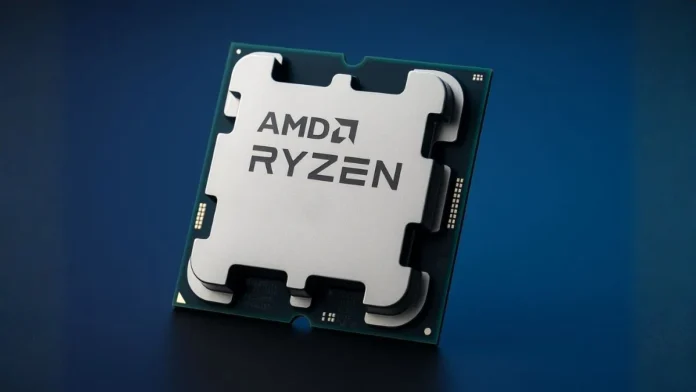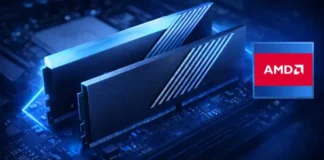The upcoming AMD Ryzen 7 9700X3D has been spotted on the PassMark benchmark database, confirming that AMD is actively testing its next-generation Zen 5 processors with 3D V-Cache technology.
This new listing provides the first measurable indication of the performance of the X3D version of the Ryzen 9000 lineup ahead of its expected release in early 2026.
Ryzen 7 9700X3D Leak Appears on PassMark
The PassMark listing shows the Ryzen 7 9700X3D as an 8-core, 16-thread CPU based on AMD’s latest Zen 5 architecture and designed for the AM5 platform. The processor was tested on a system with DDR5 memory, confirming its compatibility with current-generation motherboards.
According to PassMark records, the Ryzen 7 9700X3D achieved approximately 4,328 points in single-thread performance and 47,253 points in multi-thread performance. These results represent a significant improvement compared to the Ryzen 7 7800X3D, which averaged approximately 4,150 single-thread and 44,800 multi-thread points in the same benchmarks.
The higher multi-thread score indicates improved core efficiency and better overall cache management, thanks to AMD’s redesigned Zen 5 pipeline and refined 3D stacking layout.
| Processor | Cores / Threads | Base Clock | Boost Clock | Single-Thread | Multi-Thread | Architecture | Cache (L3 + 3D) | TDP | Year |
|---|---|---|---|---|---|---|---|---|---|
| Ryzen 7 9700X3D | 8C / 16T | ~4.0 GHz | ~5.6 GHz | 4,328 | 47,253 | Zen 5 | 96 MB (32 + 64) | 120W (est.) | 2026 |
| Ryzen 7 7800X3D | 8C / 16T | 4.2 GHz | 5.0 GHz | 4,150 | 44,800 | Zen 4 | 104 MB (32 + 72) | 120W | 2023 |
Editorial Insight: These early numbers indicate that AMD is refining cache access timing rather than just boosting core frequency. The Ryzen 7 9700X3D performs roughly 5–8% higher in single-thread workloads compared to the 7800X3D, suggesting Zen 5’s optimizations focus on smoother latency and better memory utilization instead of raw speed.
PassMark Results Show 3D V-Cache Still Leads in Gaming
The 9700X3D’s benchmark performance confirms that AMD is continuously refining its 3D V-Cache design, which adds a dedicated cache layer on top of the CPU die. This architecture reduces latency and significantly improves gaming performance by keeping more data closer to the cores.
Although the PassMark listing doesn’t reveal the full clock frequency, the internal identifiers in the listing point to an estimated base clock of around 4.0 GHz and a boost frequency of around 5.6 GHz, which is consistent with AMD’s previous high-end X3D processors.
The presence of a 3D cache model also confirms that AMD is maintaining its “X3D-first” gaming strategy, focusing on cache-driven performance rather than simply increasing core frequencies.
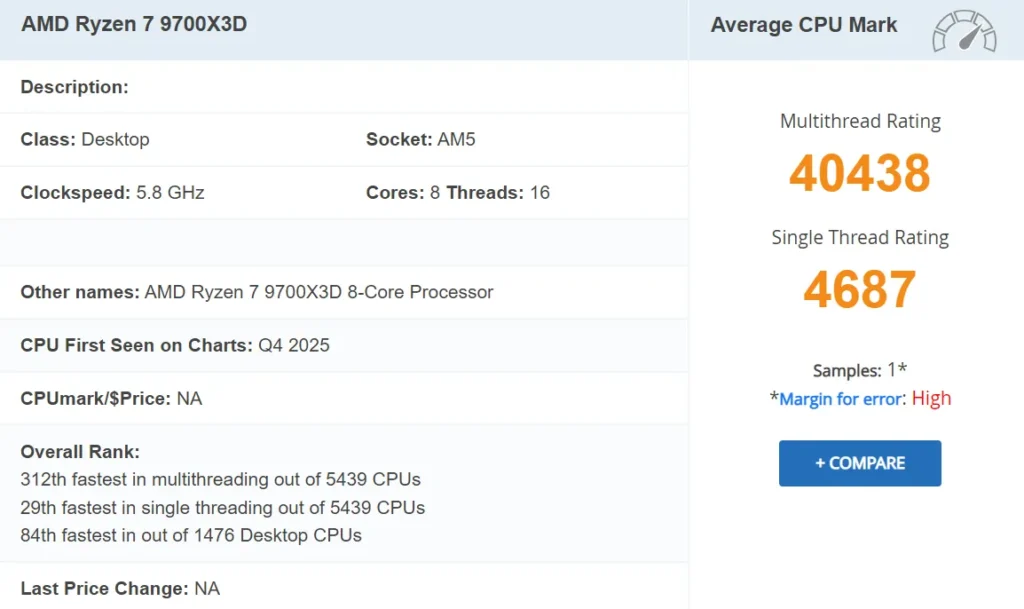

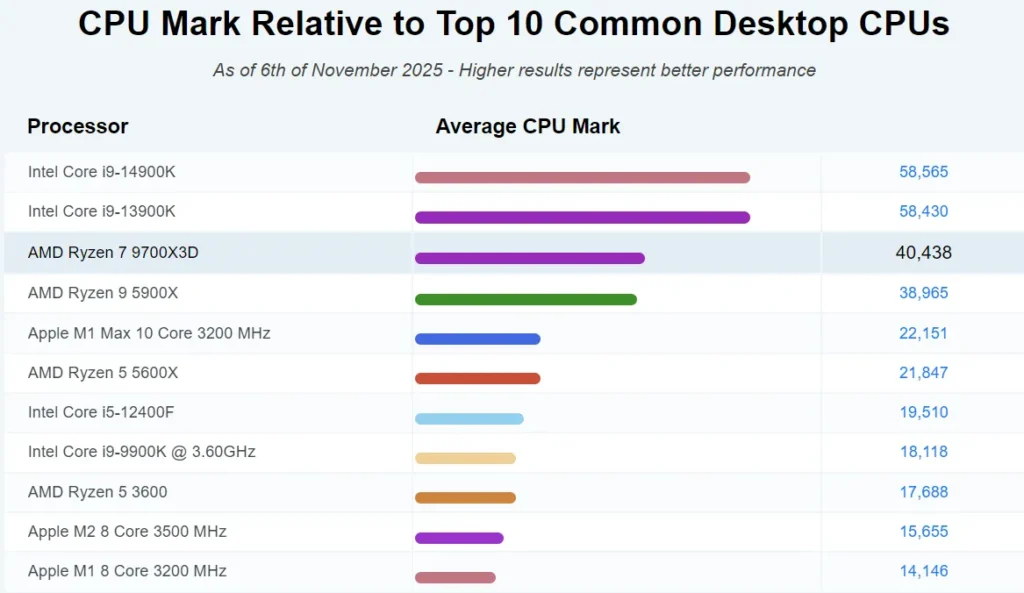
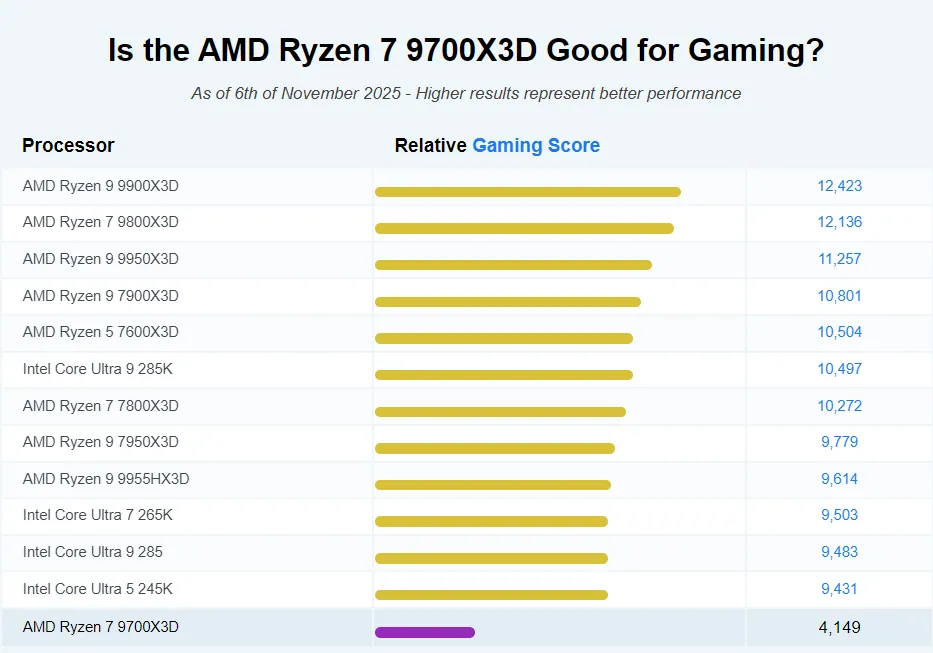
How the 9700X3D Compares to AMD’s Previous X3D Chips
The Ryzen 7 9700X3D continues AMD’s trend of providing balanced performance between gaming and productivity tasks. Based on its 8-core design and PassMark scores, it appears to outperform the previous Ryzen 7 7800X3D, while being less power-hungry than the Ryzen 9 9900X3D, expected in late 2026.
The results suggest that AMD is narrowing the gap between the standard and X3D models by optimizing the cache layout and increasing overall throughput per watt. Also this will make the Ryzen 7 9700X3D one of the best efficiency-focused CPUs for gaming and creator workloads when it launches.
Also Read: Best AMD Ryzen 3 Laptops
When AMD Could Officially Announce It
PassMark typically appears approximately two to three months before AMD announces a processor.
If the company follows its traditional release pattern, the Ryzen 7 9700X3D could launch in the first quarter of 2026, possibly around CES 2026 or AMD’s own Ryzen update event.
Since the 9700X3D features an AM5 socket, users of current-generation motherboards will be able to upgrade without hardware changes.
Pricing details are not yet known, but AMD is expected to offer it in the same segment as the Ryzen 7 7800X3D, offering premium gaming performance at a reasonable price.
Source: Passmark
